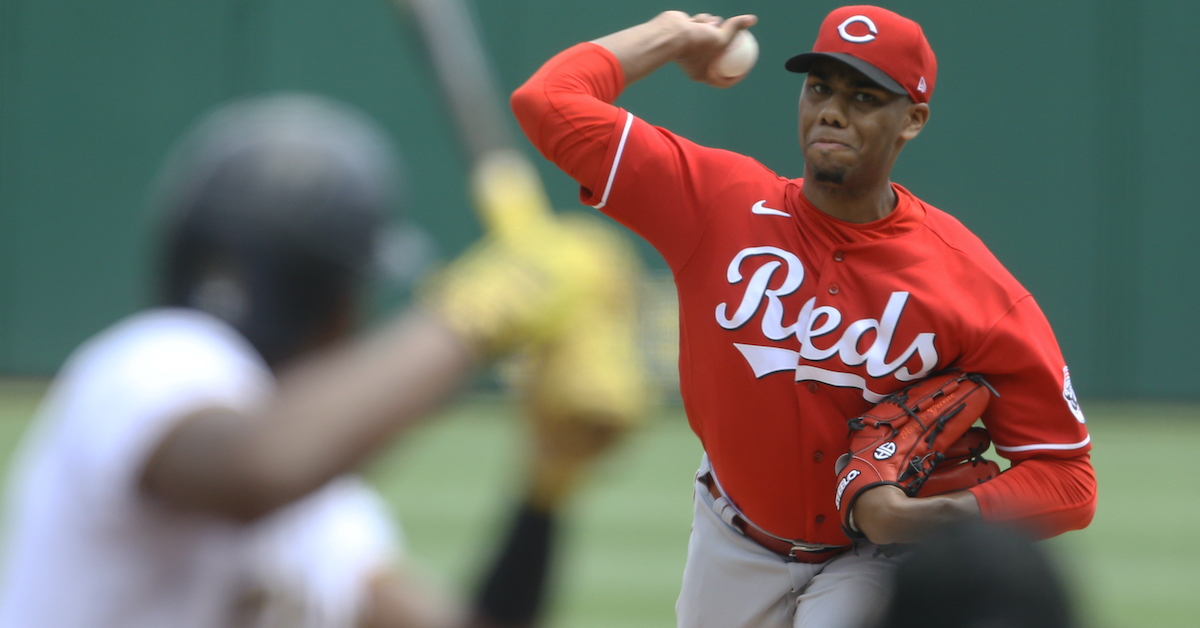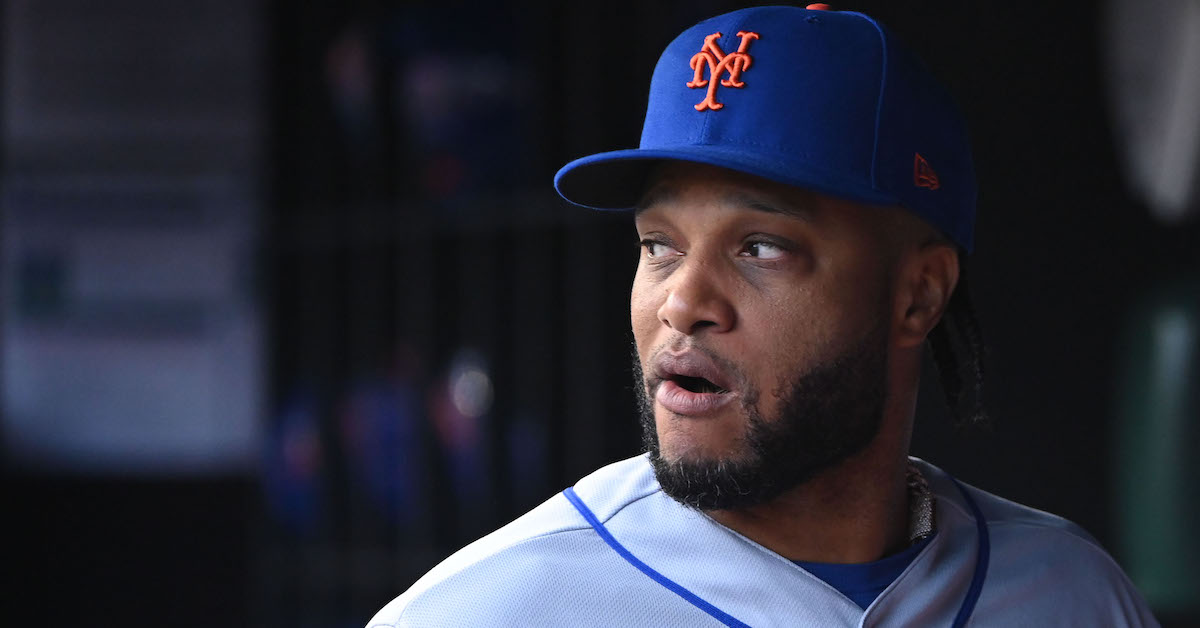Injury Rundown: Kershaw, Megill, Luzardo Get Put on the Shelf

Pitchers getting injured is never good news, even in a year in which pitching talent seems relatively easy to come by. Sadly, we got a bunch of high-profile names hitting the IL over the weekend, so here’s a quick Monday rundown in case you were doing something more fun on Sunday than stressing about injuries, like watching the baseball games (non-Giants fans, at least).
Tylor Megill, New York Mets
Given the monumental task of replacing Jacob deGrom in the Mets’ rotation at the start of the season, Megill took his job surprisingly literally, doing his best imitation of the team’s ace. Through six starts, his ERA stood at 2.43 with a nearly identical FIP at 2.44, improving significantly on his major league debut in 2021. Then came the worst start of his professional career — including the minors — as he surrendered eight runs and didn’t even make it through the second inning against the Nationals last Wednesday. Megill can’t point to bad luck either; it’s hard to complain too strenuously about BABIP when you have an xBA of .563 and an xSLG of 1.263.
On the plus side, Megill’s velocity wasn’t down during that disaster of a start, and he didn’t report any discomfort until after the game. One thing that struck me, however, is how much his horizontal release point has changed in a lateral direction throughout the season. From his first start to his last outing, Megill’s horizontal release point has shifted about five inches; those release points tend to be far more consistent in-season, as players are more likely to tinker with this in the winter and spring. Release point inconsistency is a concern, and at least one study that I’m familiar with has linked shifting lateral release points with an eventual need for Tommy John surgery, albeit with low odds (a roughly 5% higher chance of a UCL tear with every 10 centimeters of movement). That’s getting ahead of ourselves, but it’s something to file in the back of your mind.
The decision to put Megill on the IL was made after he experienced soreness during his bullpen on Saturday, with biceps tendinitis as the announced culprit. Colin Holderman got the immediate call-up to take Megill’s spot on the roster, though that may be short-lived, as David Peterson started on Friday. Trevor Williams will get Megill’s start on Monday night against the Cardinals.
In other Mets injury news — of course there’s more, it’s the Mets — catcher James McCann will be out six weeks due to a broken hamate bone. Patrick Mazeika was called up and likely endeared himself to Mets fans more than McCann has by hitting the go-ahead home run in the seventh on Saturday against the Mariners. McCann’s offense has disappeared so quickly over the last year-plus that there’s not likely to be any real consequence for the Mets other than a thinning of the depth chart.
Jesús Luzardo, Miami Marlins
Amid a promising comeback campaign, Luzardo took a step back last week, walking four and allowing four runs in 2.2 innings against the Diamondbacks, bloating his ERA to 4.03. Like Megill, there were no suspicious velocity dropoffs — something to watch for given Luzardo’s injury history — but he reported forearm soreness after the game. In “crossing our fingers” news, he did not believe the pain was similar to what he experienced before his first Tommy John surgery, back when he was a high schooler in 2016:
What Jesús Luzardo had to say about his left forearm strain. #Marlins pic.twitter.com/YAhoKsAXuv
— Christina De Nicola (@CDeNicola13) May 15, 2022
I just started feeling a little something in the San Diego game, towards the back end of it, but nothing when I was pitching or anything like that. It was more just a little soreness. I kind of backed off a little between my starts. There wasn’t really pain or anything, more like stiffness.
The Marlins held off until this weekend to place Luzardo on the IL, retroactive to his May 10 start, when it became evident that he would be unavailable. It seems that Cody Poteet, already stretched out a bit in relief of Luzardo against Arizona and not used since, will get the spot start on Tuesday, with Sandy Alcantara going on Monday.
As for replacing Luzardo long-term, it doesn’t appear as if the Marlins plan to recall top prospect Max Meyer to fill the spot. My reading of the tea leaves is that they’re not going to push Edward Cabrera up soon as a replacement either; while he’ll get another chance in the not-too-distant future, I think Saturday’s start against Triple-A Nashville would have been a few tune-up innings rather than a 90-pitch outing if a callup was imminent.
Short of any additional bad news, it’s entirely possible that, with two off days in the next week, Luzardo may only miss just the one start.
Clayton Kershaw, Los Angeles Dodgers
Kershaw was a late scratch on Friday against the Phillies, pushing Walker Buehler’s start up a day on normal rest. Kershaw has a history of lower back pain and at least one instance (2012) of hip impingement, so the Dodgers are being careful with him. The culprit this time is inflammation of the SI joint, which, I believe, is the sacroiliac joint and not the Sports Illustrated joint; on the pelvis, it’s between the hip and the spine. As I did not attend Hollywood Upstairs Medical College, and my medical knowledge is primarily evaluating how sick I’ll feel if I eat some deliciously spicy food, let’s consult actual doctors here:
Biomechanically, the sacroiliac joint performs several functions. Primarily, its purpose is to attenuate the distribution of force loads from the lower extremities. It functions both as a shock absorber for the spine above and converts torque from the lower extremities into the rest of the body.
As pitching largely involves transfers of force between body parts, it’s understandable why the Dodgers see the need to be cautious. Last year was the first time Kershaw was placed on the IL with elbow issues, and given that it scared them enough to shut him down quickly for the postseason, this is not unexpected caution.
To replace Kershaw on the roster, the Dodgers called up Michael Grove, who got the start on Sunday and may get another down the road, though with a very quick hook. Andre Jackson looked like a rotation fallback option at the start of the season, but he’s failed to finish the third in each of his last three starts for Triple-A Oklahoma City, allowing 10 walks in just 3.1 innings.








